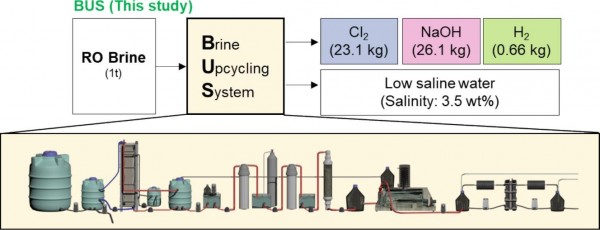Economic evaluation of a brine upcycling system for resource recovery from seawater desalination brine
- Journal
- Separation and Purification Technology
- Year
- 2025
Resource recovery from brine generated during seawater desalination such as reverse osmosis (RO) has gained significant attention in recent years as a sustainable approach to brine management. It is because the treatment of RO brine is essential to mitigate environmental damage and comply with increasingly stringent brine discharge regulations. Upcycling the RO brine into NaOH and Cl2 via electrolysis is considered a promising approach, as it not only efficiently removes the predominant NaCl dissolved in brine but also produces high-value resources (NaOH and Cl2) that are widely utilized across various industries. Modeling studies on Brine Upcycling System (BUS) have estimated that the revenue from resource production outweighs the overall cost associated with energy and chemical consumption. However, while these modeling results indicate the theoretical feasibility of BUS, they are not based on experimental data and do not account for capital expenditure (CAPEX), leaving its economic viability unverified. In this study, we evaluated the economic viability of BUS through experimental analysis and CAPEX assessment. required for a full-scale plant capable of processing. The results indicate an annual net profit of USD 19.3 M for the plant of 10,000 t of RO brine per day capacity. a benefit-to-cost (B/C) ratio of 1.14, a net present value (NPV) of USD 131.19 M, and an internal rate of return (IRR) of 18.3 %. These findings demonstrate that the BUS provides both environmental value and economic profitability, highlighting its potential as a sustainable solution for brine management.

